Best of 2024
Jan 20, 2025
GCP Momentum Builds
With the Green Cincinnati Plan’s ambitious goals of 50% carbon emissions reduction by 2030 and 100% carbon neutrality by 2050, we want to keep you up to date on progress. Based on 2023 emissions data, the City can now report that we are 39.8% of the way to our 50% goal based on 2006 baseline numbers. A detailed breakdown of our emissions sources and our plans to reach carbon neutrality by 2050 can be found on the city’s ClimateView Dashboard.
The GCP also holds a number of goals. We are busy establishing baselines and tracking to better understand progress and barriers in our collective work together. Here are a few highlights:
- In 2022, Cincinnatians collectively rode 65,791,945 miles of public transportation; in 2023, that number was 71,180,866 miles, which puts us well on track to reach our GCP goal of a 25% increase in miles ridden (82,239,931) on public transit by 2030.
- The GCP includes the goal to “build a policy framework that supports the creation of connected communities”. In a major win, City Council passed the Connected Communities Ordinance this summer, legalizing “Missing Middle” housing in parts of the city, doing away with density restrictions and parking requirements, and incentivizing affordable housing citywide. Cincinnatians will reap the benefits of denser (and therefore greener) buildings and shorter or car-free commutes for years to come.
- Cincinnati is also making substantial progress on reducing building emissions 30% from 2021 levels by 2030. In 2021, building emissions totaled 3.62 million tons. In just two years, building emissions have dropped to 2.79 million tons. These emissions reductions are due in part to the City’s Power Purchase Agreement with a large local solar facility, in part to energy efficiency upgrades, and in part to the continued retirement of coal plants in Ohio.
Work as complex as climate change mitigation and adaptation takes an all-hands-on-deck approach. A year and a half into the 2023 Plan’s implementation, OES is proud to share that 119 organizations and counting have joined in to complete portions of the Green Cincinnati Plan. Together with GCP Partners, we have created momentum in 107 of the Plan’s 130 Priority Actions – a great marker of progress less than 2 years into implementation! To learn more about our current GCP Partners and explore how to become one, visit here. Thank you to all who have joined the efforts in ways large and small. We look forward to engaging more deeply with existing and new partners in 2025!
 Funding Infusion
Funding Infusion
From residential solar to EV charging and from energy efficiency standards for buildings to community composting, OES has been pushing to increase our capacity to reach the goals established in the 2023 GCP by leading and supporting the pursuit of federal funds. During 2024, OES led or actively helped to secure $45.5 million in implementation funds to support equitable, local climate solutions. This brings the total since passage of the largest federal climate legislation in our country’s history in 2022 to $54.1 million for Cincinnati. This does not even count the City’s investment of over $9 million of its own funds since the launch of the 2023 GCP planning process.
OES is many times best positioned to support climate action through the pursuit of funding. The impact of these investments will become clear in the years to come as electric vehicle chargers pop up in business districts, more rooftops and brownfields start to produce energy from the sun, hillsides are stabilized, composting becomes available to everyday residents, resilience hubs become available, and so much more.
Solar Surges
2024 was a big year for solar energy in Cincinnati!
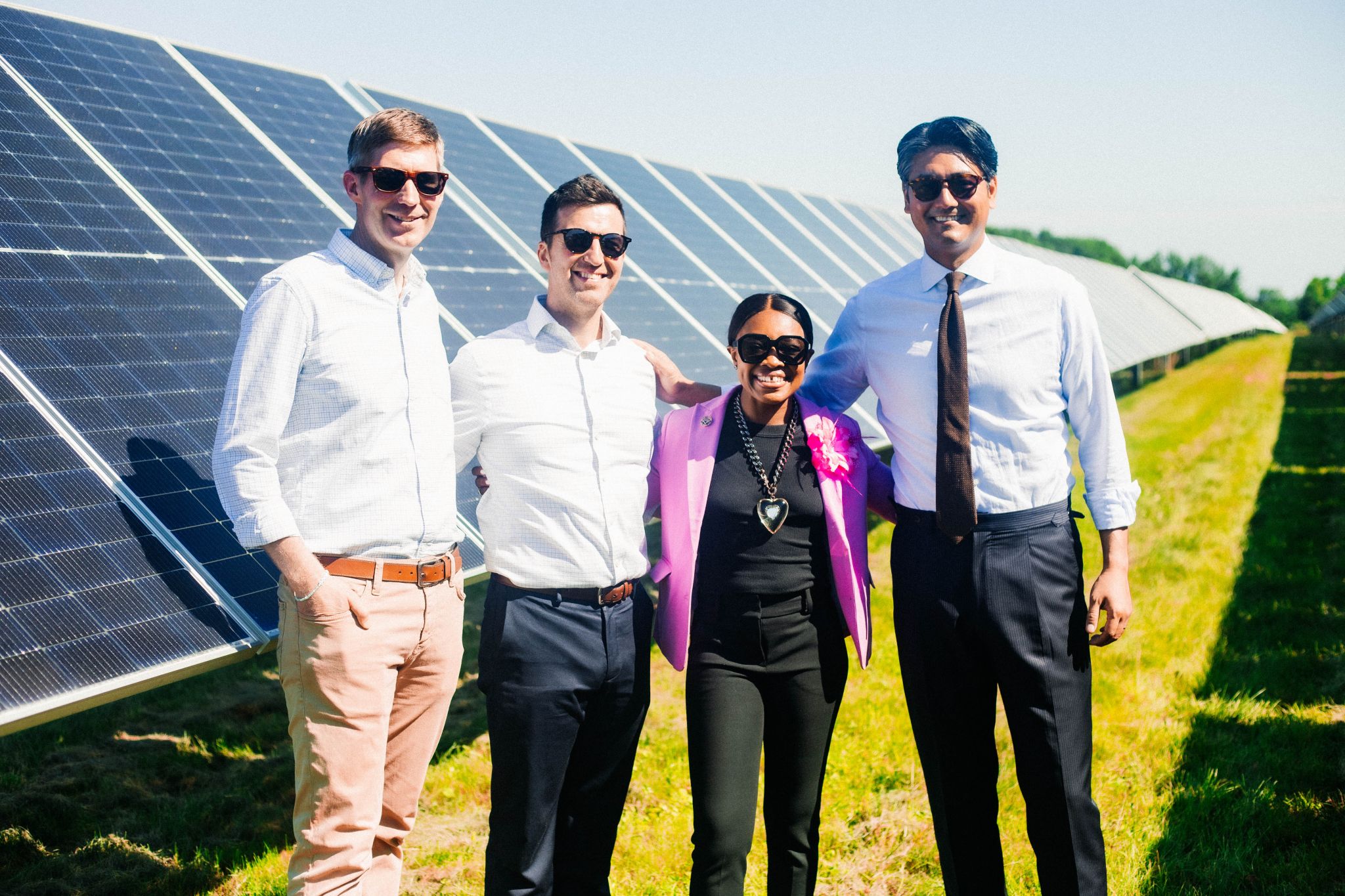
New Market Solar Array Goes Live - One of the largest city-established solar array projects in the nation began to provide clean power for Cincinnati residents last May. The New Market Solar project, located east of Cincinnati in Highland County, covers close to 900 acres, about the size of 680 football fields, and consists of more than 310,000 solar panels. The power produced is being used to generate power for residents participating in the City’s electric Community Choice Aggregation program. The recently completed 65 MW for the aggregation program joins a 35 MW array at the same site that began producing power for City facilities in 2022. The combined 100 MW solar array will provide locally produced renewable energy that will reduce the region’s carbon emissions by 158,000 tons annually. The array will help the City save an estimated $1.8 million over the next 20 years and help it reach its goal of 100% renewable energy by 2035.
SolSmart Designation Pursuit - The City of Cincinnati is pursuing SolSmart designation, which is a program that helps local governments make going solar easier for residents and businesses. OES is leading this effort in collaboration with staff from Buildings & Inspections as well as Planning & Engagement. This cross-departmental team achieved Bronze Designation in 2024 and created the following new tools and resources. Check them out and share them widely! Solar + Clean Energy Web Page , Solar Permitting Checklist, Zoning Clarification Letter, and Zoning & Land Development Code Fact Sheet: Solar PV Systems. Stay tuned for more exciting progress on this front in 2025 as we work towards Gold Designation!
City Facilities Solarized - As the City aims to lead the way in using city buildings to produce clean energy, five City buildings received solar installations during 2024 bringing the total rooftop solar on City Facilities to 2.5 MW. The City plans to complete additional solar projects in 2025, as well as several battery storage projects in support of the resilience hub priority action in the Green Cincinnati Plan.
City’s Next Big Solar Plans Brewing - But our solar work is in many ways just beginning! The City is presently in the process of seeking our next clean energy solutions partner through a formal RFP process, which has the potential to net another 100+ megawatt array as well as several 2–5-megawatt arrays in and near the City. Over $20 million in Solar for All funding is anticipated to make its way to our area in 2025 to serve single-family, multifamily, and aggregation program participants.
GCP Seeds of Change Grow
 OES was proud to roll out a new overall grant program in 2024 to build on longstanding community grantmaking efforts by OES. As a result of three rounds of funding – an open call, youth round, and urban agriculture mini grants – OES was able to award partners $273,991 throughout 2024. Sixty-nine projects were chosen for funding ranging from $500 to $20,000 impacting all 8 focus areas of the Green Cincinnati Plan at the neighborhood level. Projects were selected by diverse review committees and made possible with funds coming from both city dollars and generous, private sources. As a means of remaining accountable to the GCP Equity pillar, the Program is proud to share the following metrics from 2024: 74% of the communities impacted are identified as Low-Income Disadvantaged Communities by the federal government, 42% of funded projects are led by a Person of Color, and 56% of funded projects benefit more than 50% people of color in our city.
OES was proud to roll out a new overall grant program in 2024 to build on longstanding community grantmaking efforts by OES. As a result of three rounds of funding – an open call, youth round, and urban agriculture mini grants – OES was able to award partners $273,991 throughout 2024. Sixty-nine projects were chosen for funding ranging from $500 to $20,000 impacting all 8 focus areas of the Green Cincinnati Plan at the neighborhood level. Projects were selected by diverse review committees and made possible with funds coming from both city dollars and generous, private sources. As a means of remaining accountable to the GCP Equity pillar, the Program is proud to share the following metrics from 2024: 74% of the communities impacted are identified as Low-Income Disadvantaged Communities by the federal government, 42% of funded projects are led by a Person of Color, and 56% of funded projects benefit more than 50% people of color in our city.
According to Director of OES, Ollie Kroner, “Moving toward our ambitious goal of 100% carbon neutrality by 2050 requires an all-hands-on-deck approach, especially considering how differently heat waves, erosion, flooding, and air quality impact the most vulnerable in our city. With the GCP Seeds of Change Grant Program up and running, we look to residents to lead us toward localized solutions to building a more sustainable, equitable, and resilient Cincinnati. Special thanks to Bloomberg Philanthropies’ new Youth Climate Action Fund as well as the Greater Cincinnati Foundation and their generous donors for co-funding.
OES looks forward to growing this grant program and wrapping the long-standing, successful urban agriculture minigrant program in more fully for 2025. Announcements regarding priorities and timelines are coming in late January.
EV Efforts Move Ahead
Momentum is building in multiple ways on the electric vehicle (EV) front here in Cincy! OES and other City Departments are working hard to electrify the City’s fleet of vehicles and build accessible charging hubs. In 2024, the City purchased 18 electric vehicles. The City now has 60 EVs and 9 PHEVs in its fleet. As the number grows, the City is actively upskilling its staff mechanics to service EVs in the City’s garage. Centralized charging hubs will be a major focus in 2025 adding to the 60 Level 1 and 2 chargers currently available at City-owned facilities.
The growth of public-facing charging took steps forward in 2024 laying the groundwork for visible growth in 2025. As 2024 came to a close, the City executed a contract for public-facing charging to take root in neighborhood business districts. This effort is complemented by $2.26 million in grants from OKI's Carbon Reduction Fund and US Department of Transportation’s Charging & Fueling Infrastructure grants which will bring chargers to a number of Parks and CRC sites. Chargers will begin to appear near you in the coming year!
A Big Year for Brownfields
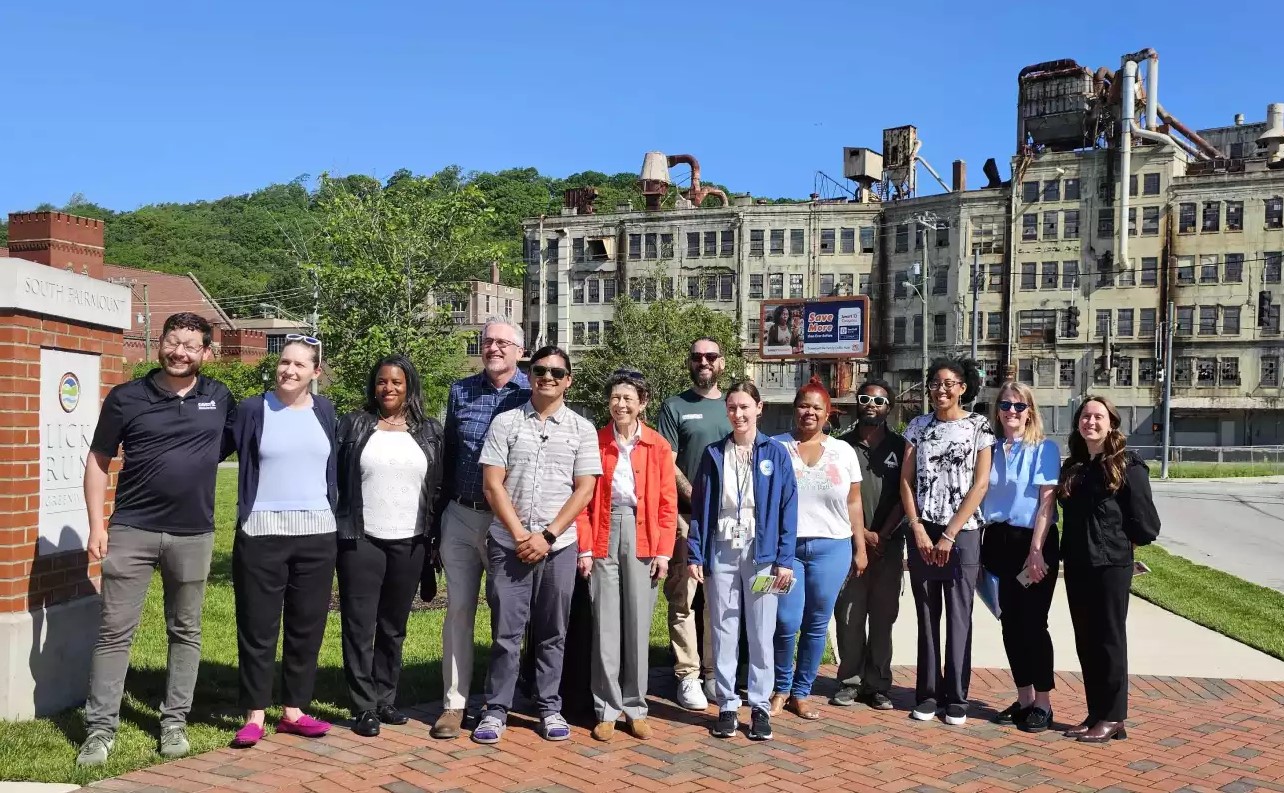
Due to previous industrial development patterns in Cincinnati, the City is home to numerous vacant and underutilized properties. These “brownfields” can be contaminated with hazards like asbestos and lead and can therefore not be reused until cleaned up. These vacant properties are a risk to human health and safety, not to mention a loss of tax revenue. The good news is that 2024 was a great year for brownfield revitalization funding in the city.
In 2024, OES began work on a $500,000 Brownfield Assessment Grant from the US EPA to complete a brownfield inventory, assessment, remediation and reuse planning, and community engagement for the Lower Mill Creek Valley. Learn more about exciting progress on this front here. In addition, the City teamed with Hamilton County, the Port, and others to achieve over $31 million in Ohio Department of Development Brownfield Remediation Program funding to facilitate both assessment and remediation efforts within city limits. To see a full list of projects awarded by ODOD, visit this page here.
When a brownfield is revitalized, neighborhoods and their residents have a better opportunity for jobs, food, housing, recreation, greenspace, or entertainment. Opportunities for redevelopment allow for resident engagement and economic development to allow pride to grow, human health and well-being to be better cared for, and economic development to occur. We look forward to seeing improvements from these investments take shape in months and years to come.
Electrify Cincy’s Reach Expands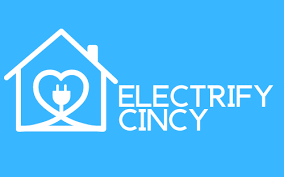
OES and partners were thrilled to launch the official Electrify Cincy website as stage two of the efforts to support Cincinnatians to accelerate the electrification of our homes and businesses, Electrify Cincy aims to educate residents and contractors as we work towards the Green Cincinnati Plan goal of 20,000 electrified homes by 2028. Building electrification is the shift from powering buildings with fossil fuels like natural gas, coal, and propane to powering them with electricity to reduce costs and improve our environment. The primary focus of the site is to provide residents, landlords, and business owners with the information each needs to take on their electrification journey - from assessing and preparing to replacing and even producing. There is not one correct place to start, which can make it daunting to get started. With the launch of our new site, plus community presentations in full swing, we hope to empower Cincinnatians with the information needed to make the switch to fossil fuel-free buildings to grow towards even more stable, comfortable, and healthy lives. The original pilot and website are funded thanks to the generosity of the Environmental Protection Agency’s Region 5 Air Quality Division. Explore the Electrify Cincy website, sign the Pledge, invite Nolan to give a presentation in your neighborhood, and remember: “when it dies, electrify!”.
Food Waste Diversion Reach New Heights
OES continued to work on community composting projects across the city and support food rescue partners thanks to funding from a second USDA Composting and Food Waste Reduction Grant (CFWR) award. The previous award allowed OES to support the creation of 22 Johnson-Su bioreactor composters at community gardens which were filled with a mixture of local food scraps, wood chips, and leaves. Annually they will divert 40,000 lbs. of organic materials from the landfill. Funding from both the first and second awards enhances expansion of Common Orchard’s food scrap drop-off and community composting site in Camp Washington. In September 2024, OES hired Laura Lair as the new Community Composting Coordinator. Laura will continue supporting the existing Johnson-Su bioreactor projects by facilitating compost harvest days and coordinating food scrap delivery for refilling the bioreactors. She will also work with new gardens and urban agriculture sites across the City to build at least 20 more bioreactors in 2025. The new grant also provides operational support to two local non-profit partners, La Soupe and Society of St. Andrew, to increase capacity to divert wasted food through Rescue/Transform/Share and gleaning activities. Lastly, Queen City Commons was selected to pilot food scrap drop-off programs in four neighborhoods. If your neighborhood is interested in hosting one of the pilot programs or you want to talk about community composting, please reach out to Laura. OES is proud of the work we have done alongside our partners to divert organics from the landfill in 2024, and we look forward to increasing everyone’s impact in 2025!
Green Workforce Foundation Laid
The City of Cincinnati and our partners are eager to prepare the workforce for a transition to a thriving, green economy as we face the dual challenges of climate change and economic inequity. This was the loudest theme of the 2023 GCP community engagement process and OES is taking steps to respond. Early in his tenure, Fuse Executive Fellow, Thanapat Vichitchot, uncovered limited awareness of green jobs and career pathways, high competition for labor, gaps throughout in-demand green job sectors, and smaller than needed capacity in existing programs. Therefore, his first year was spent assessing the green workforce landscape, listening to, and partnering with employers, education and training providers, connecting all to resources and collaboration opportunities, supporting coalitions, leading an innovation lab with over 20 external partners, and developing communications to raise broad awareness on behalf of the City and OES. Clear signs of progress include community education tools including a new Green Jobs webpages, a growing partners network with regular communications, the start of upskilling training for car mechanics, and green job coalitions formed. Looking ahead, we will share a collaboratively built Green Workforce Landscape Analysis Report in the coming months that will inform our strategies in this space for years to come. This report will also inform the development of new training programs, educational resources, funding opportunities, innovation labs, and more!
Waste Diversion Raises the Bar
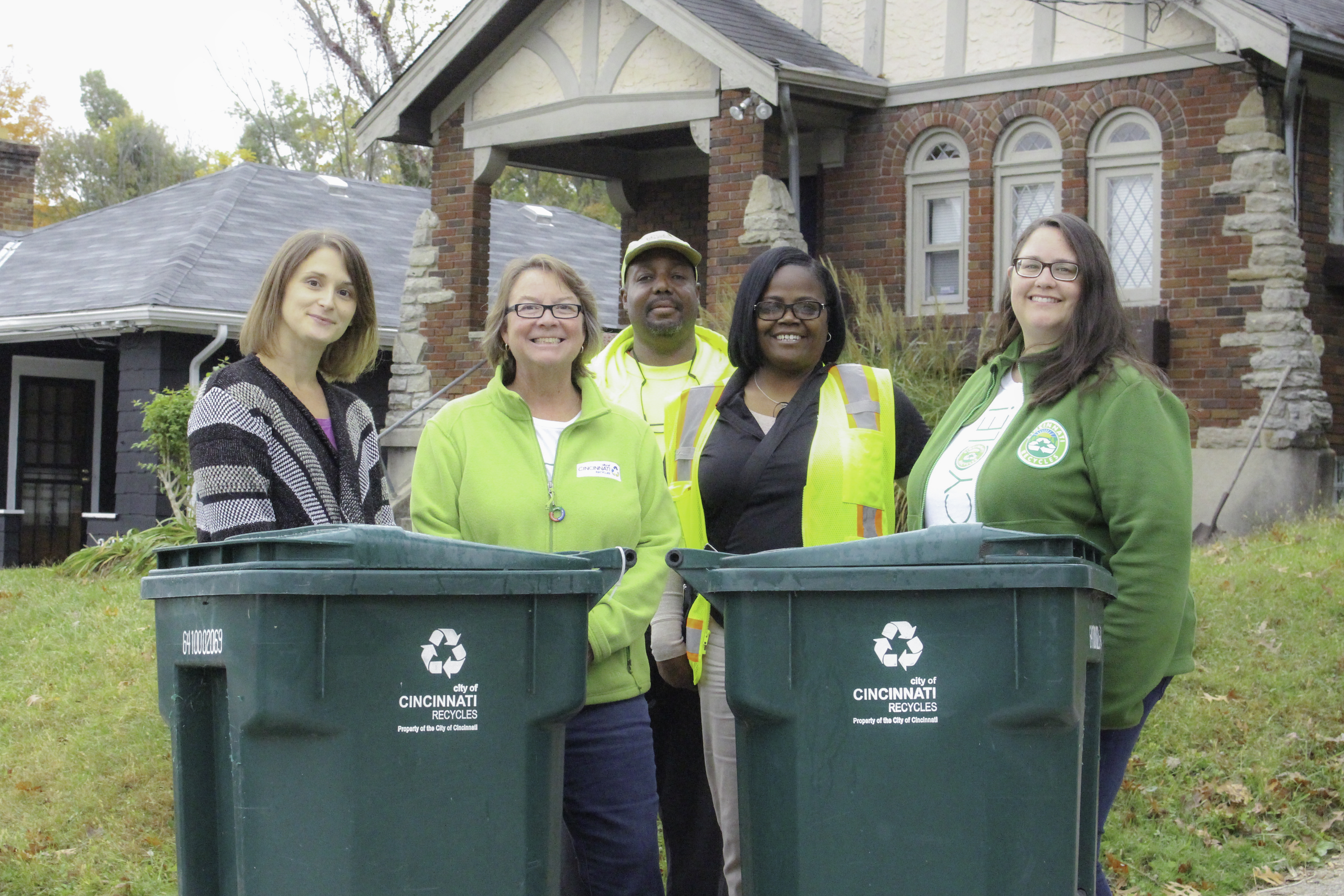
As we close out 2024, OES’ Recycling team clearly stayed true to its mission of making waste diversion accessible for all Cincinnati residents by eliminating barriers to participation and providing exceptional service.
Our recycling team managed over 6,500 service requests in 2024, resolving 94% within seven days. Recognized as the 'Gold Standard' for customer service by City leaders, Tim, Naomi, and Jenn have made recycling more accessible, achieving a remarkable 97% customer satisfaction rate. Whether delivering carts to new recyclers or replacing broken carts for seasoned participants, our team ensures you are always ready to recycle. For more information, visit our website!
In 2024, we made substantial progress in advancing the Green Cincinnati Plan’s waste diversion goals by focusing on expanding access, improving education, and increasing participation across the city. Below are key achievements that helped us move closer to a zero-waste future:
- Multifamily Recycling Access: Collaborated with Hamilton County Resource to improve recycling access and participation at multifamily complexes through supportive, educational pilot programs, with plans for expansion in 2025.
- Specialized Campaigns: Reached 6,583 households with targeted educational campaigns, providing indoor recycling bins to boost participation, with plans to continue and expand in 2025.
- Educational Engagement: Partnered with Rumpke to provide three city-sponsored lunch-and-learn tours of the Materials Recovery Facility, offering residents and city staff insight into recycling processes.
- Community Outreach: Engaged over 2,300 residents through outreach events across the city, fostering greater participation and awareness.
- Improved Waste Diversion at City Facilities: Fostered environmental responsibility within City-owned buildings by providing easily accessible recycling stations and ongoing educational resources to encourage staff and the visiting public to actively participate in waste diversion efforts.
- Data and Messaging Refinement: Partnered with The Recycling Partnership (TRP) to refine data and messaging from results of current and past participation projects, enhancing future campaign effectiveness.
- National Leadership: Our own Sue Magness joined The Recycling Partnership’s (TRP) Recycling Solutions Ambassador Network, contributing to national efforts to refine recycling resources and tools.
The Commercial Waste Hauler Program continued to grow, welcoming five new franchisees and bringing the total to 21 participants. This program, which incentivizes recycling in the commercial sector, ensures high-quality service and proper disposal and diversion of recyclables. The initiative directly supports key goals of the Green Cincinnati Plan, including achieving zero waste by 2035 and reducing residential landfill tonnage by 20%. This year, the program is projected to generate over $7,000,000 in revenue.
IRA Expertise Builds Bridges
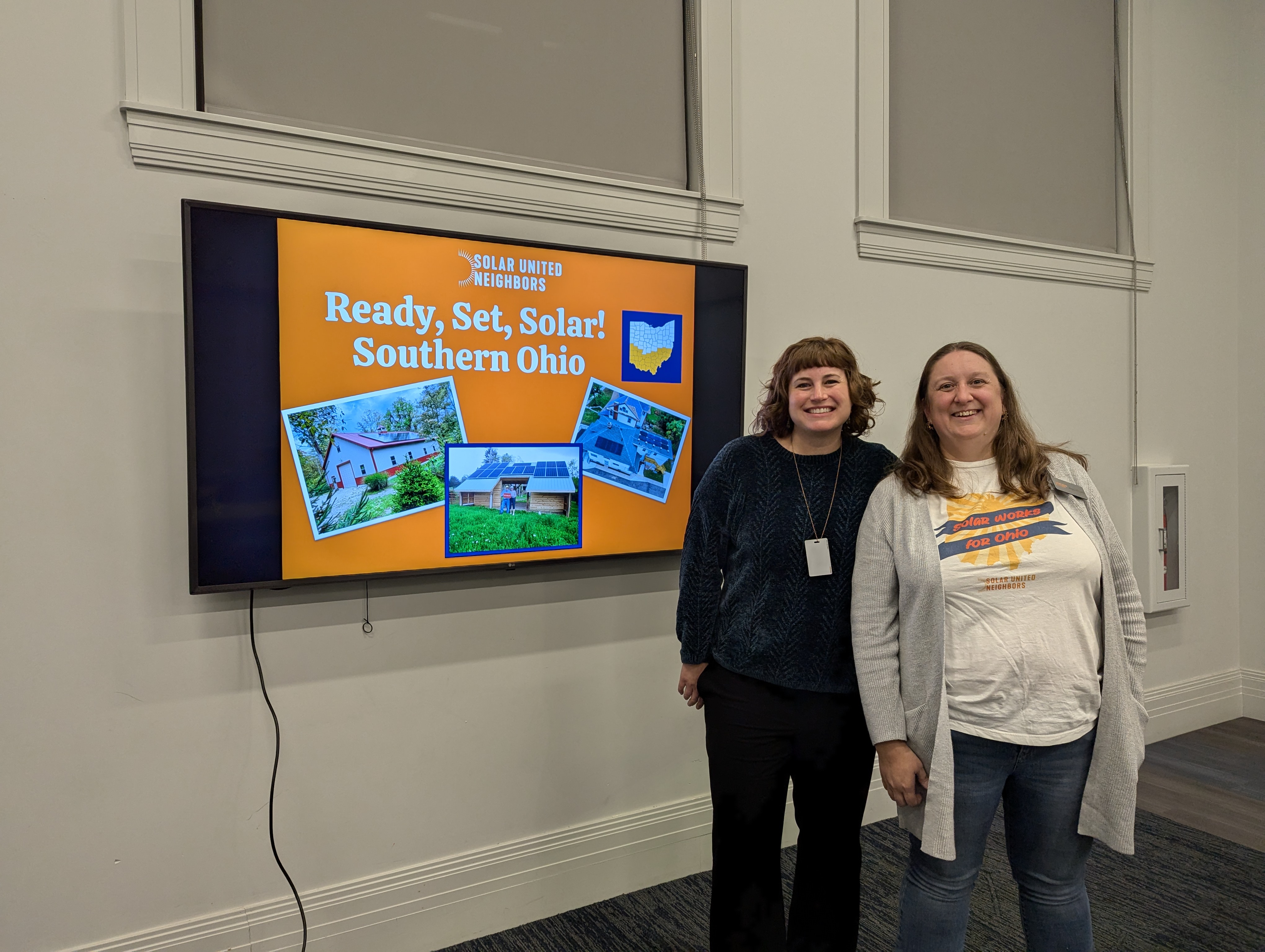
As the impressive amount of federal investments through the Inflation Reduction Act (IRA) started to come to light over the past year, Nikki Vandivort, Fuse Executive Fellow with OES, was there to make sense of it all. Nikki spent her first year based in OES understanding and messaging the opportunities before us, strengthening internal and external relationships, and facilitating connections and collaborations to better prepare us all for the green energy transition. She has led the City’s SolSmart pursuit to make Cincinnati more solar friendly, reached 220 key stakeholders and residents with her comprehensive IRA presentations, supported over a dozen partner institutions to explore IRA incentives to help save on building energy upgrades, and served as a subject matter expert across several coalitions including Cincinnati’s effort to launch a Green Bank. In her second year, Nikki aims to continue to grow this year’s efforts, shepherd the City’s Solar for All and electric vehicle charging grants, facilitate the community-led Avondale Resilience Hub project, and support the contracting for our next, big clean energy investment. To connect with Nikki, reach out to her here.
Cincy Air Watch Grows Air Quality Data Access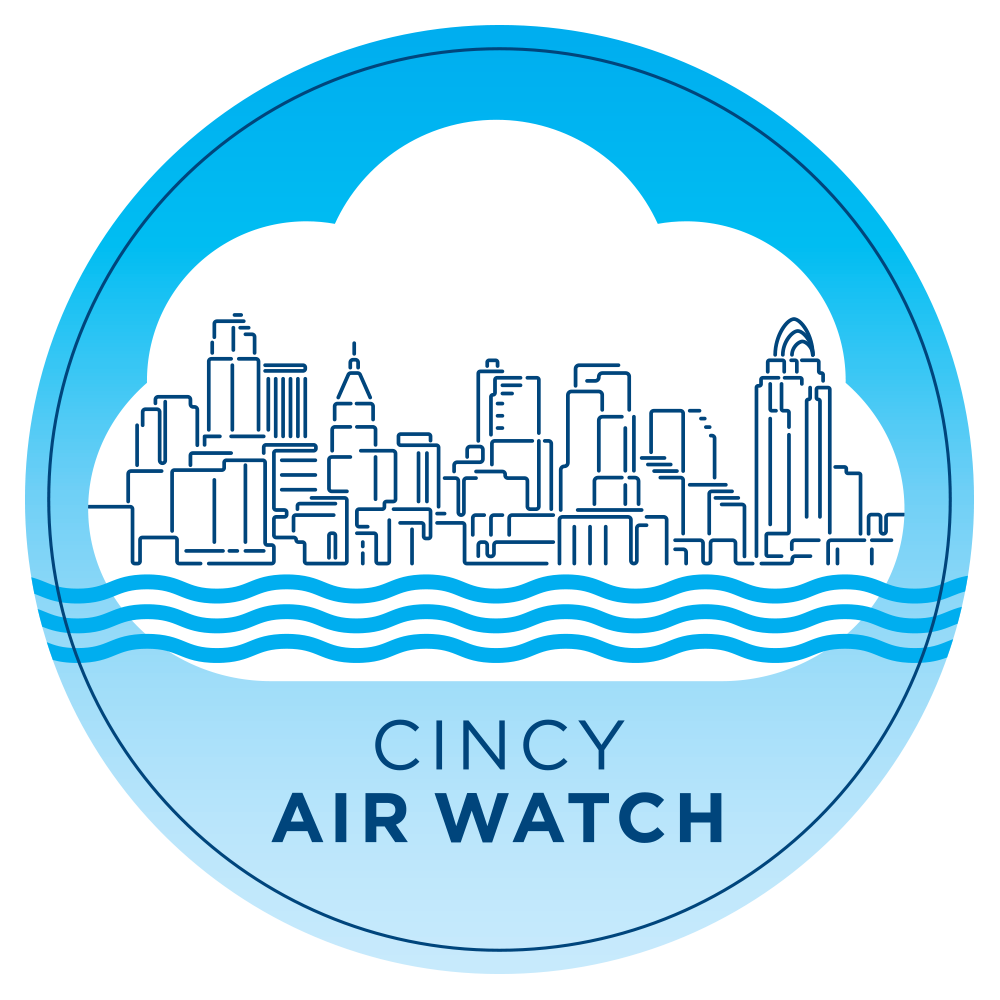
The Cincy Air Watch Dashboard is now live! Cincy Air Watch is a joint effort between OES and the Cincinnati Health Department (CHD) to support the 2023 Green Cincinnati Plan strategy to “increase air quality studies, education, and reduce pollution from air emissions in the city.” Through this project, PurpleAir monitors are installed at partners like recreation centers, libraries, and schools in Cincinnati neighborhoods. The data is available in real-time on the new Dashboard through Cincy Insights and on the Cincy Air Watch Website.
The initiative aims to enhance community awareness of local air quality conditions and to investigate the relationship between air quality, asthma, tree canopy coverage, and heat island effects. To learn more about how air quality affects your health, view the Air Quality Educational Guide developed and published by the Cincinnati Health Department.
Resilience Hubs Rising
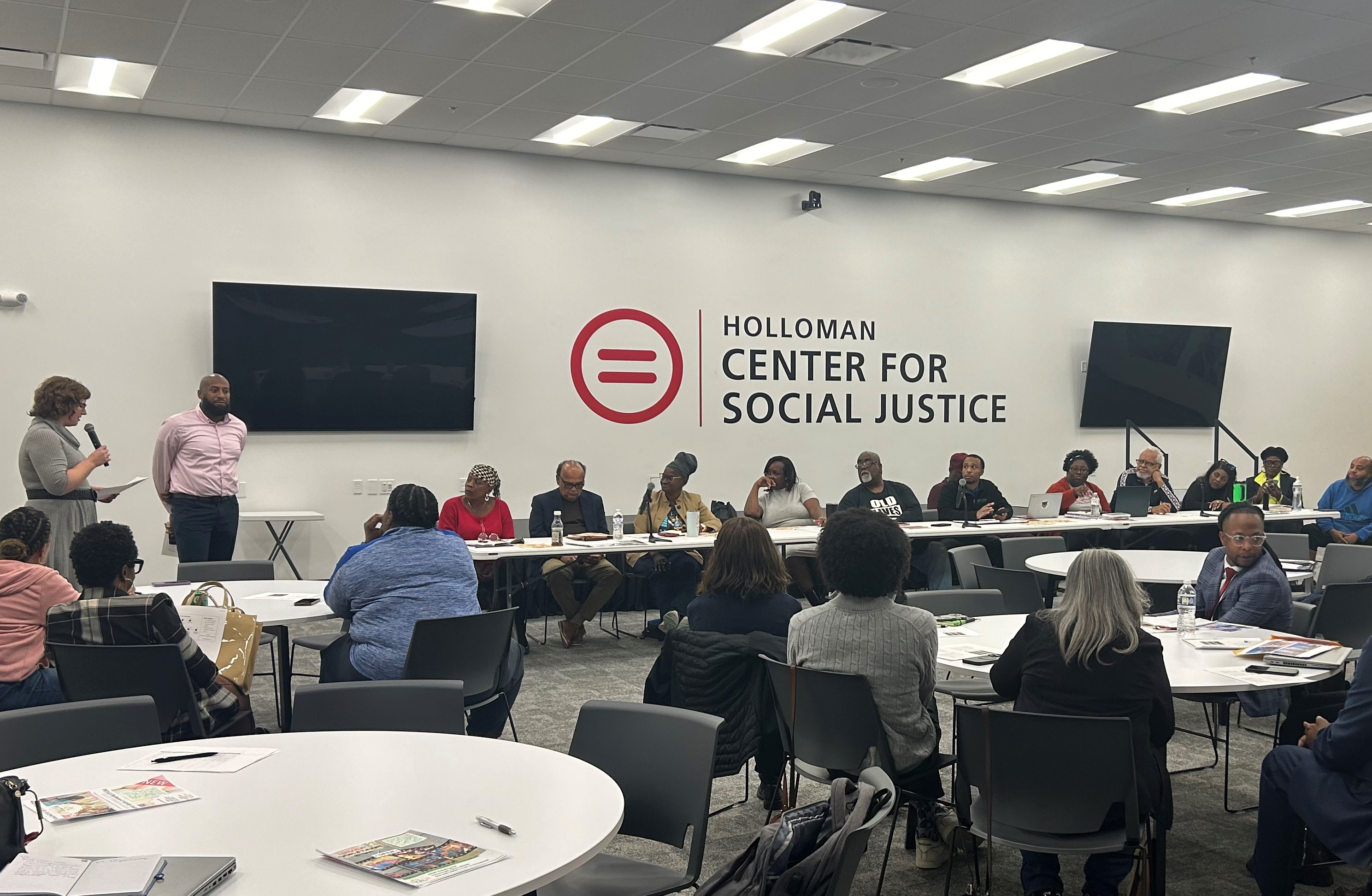
Cincinnati has been feeling the effects of extreme weather recently, but these weather events are only expected to increase in frequency because of climate change. This leaves us asking: how can we prepare for and support residents to safely respond to extreme weather events? One strategy to lessen the effects of extreme weather and other shocks on residents are Resilience Hubs.
Resilience Hubs are community-serving facilities that improve residents’ resiliency, health, and emergency preparedness by offering resources and services during normal, blue-skies days and during community-wide disasters. Each Resilience Hub offers different services and resources depending on the neighborhood’s needs, but some examples of services include child-care, workforce development opportunities, food distribution, emergency shelter, cooling or heating stations, and connection to other resources.
OES is collaborating with the Urban League and Groundwork Ohio River Valley on a project to develop a resilience hub in Avondale. Through a grant provided by the Urban Sustainability Directors Network, OES and our partners are assessing the Urban League’s Avondale facility’s capacity for rooftop solar and battery installation and conducting community engagement with residents to ensure that the future Hub meets the needs of the nearby residents. OES is excited to continue the Avondale Resilience Hub project in 2025 with our partners. Look out for more news regarding this project in the spring of 2025!
In addition to this exciting project in Avondale, OES is working closely with the Cincinnati Recreation Commission to equip recreation centers to serve in a similar capacity especially in our priority communities where heating, flooding, and other symptoms of climate change are felt most acutely.
If you are interested in joining the Resilience Hub efforts or know an organization already doing similar work, please contact Howard Miller.
Environmental Advisory Board Launches
OES was pleased to launch the newly reconstituted Environmental Advisory Board (EAB) at the direction of Council and the City Manager in late January 2024. The EAB is a 14-member board of community leaders appointed by the City Manager with a mission of promoting awareness of environmental and sustainability issues in the city, serving as a public advocate for the Office of Environment and Sustainability (OES), and assisting OES in implementing the recommendations of the Green Cincinnati Plan, including measuring the impact of the programs and initiatives. The EAB helps to combat climate change, improve the health and well-being of our citizens and our environment, and positions Cincinnati to be a leader in sustainability policy and city level climate change initiatives. Action steps taken this year include establishment of the Board’s Bylaws, sub-committees, Board education on policy change mechanisms, comment on the Connected Communities legislation, and working to provide policy comments on Green Cincinnati Plan priority action items.
Climate Action Planning Engages the Region

OES is a key member of Thrive Together, a regional coalition of local governments, non-profits, and businesses creating a Comprehensive Climate Action Plan for Greater Cincinnati. To better listen to residents and create a Comprehensive Climate Action Plan informed by their insights, Thrive Together is undertaking a community engagement effort across the region. We want to know the environmental issues facing residents and potential solutions they would like to see included in our region’s Comprehensive Climate Action Plan.
A target demographic of this engagement is young people, anyone under the age of 25. OES, in collaboration with Green Umbrella, has hosted a series of workshops across the Greater Cincinnati Area to have conversations with young people about their vision for a more sustainable region. So far, 75 young people have contributed to the Comprehensive Climate Action Plan through these workshops, with more workshops scheduled for January. If you would like to host a Climate Action Planning session for young people, please contact Lauren Clark (lauren.clark@cincinnati-oh.gov).
Engagement in Climate Action Planning extends beyond youth engagement! OKI, Green Umbrella, and OES would like to encourage your participation in the brainstorming process. Share your ideas regarding environmental issues, climate hazards, and potential solutions you would like to see included in the Comprehensive Climate Action Plan by using Thrive Together’s Go Vocal platform. Visit the “Engage by Community” or “General Survey” pages to participate.
